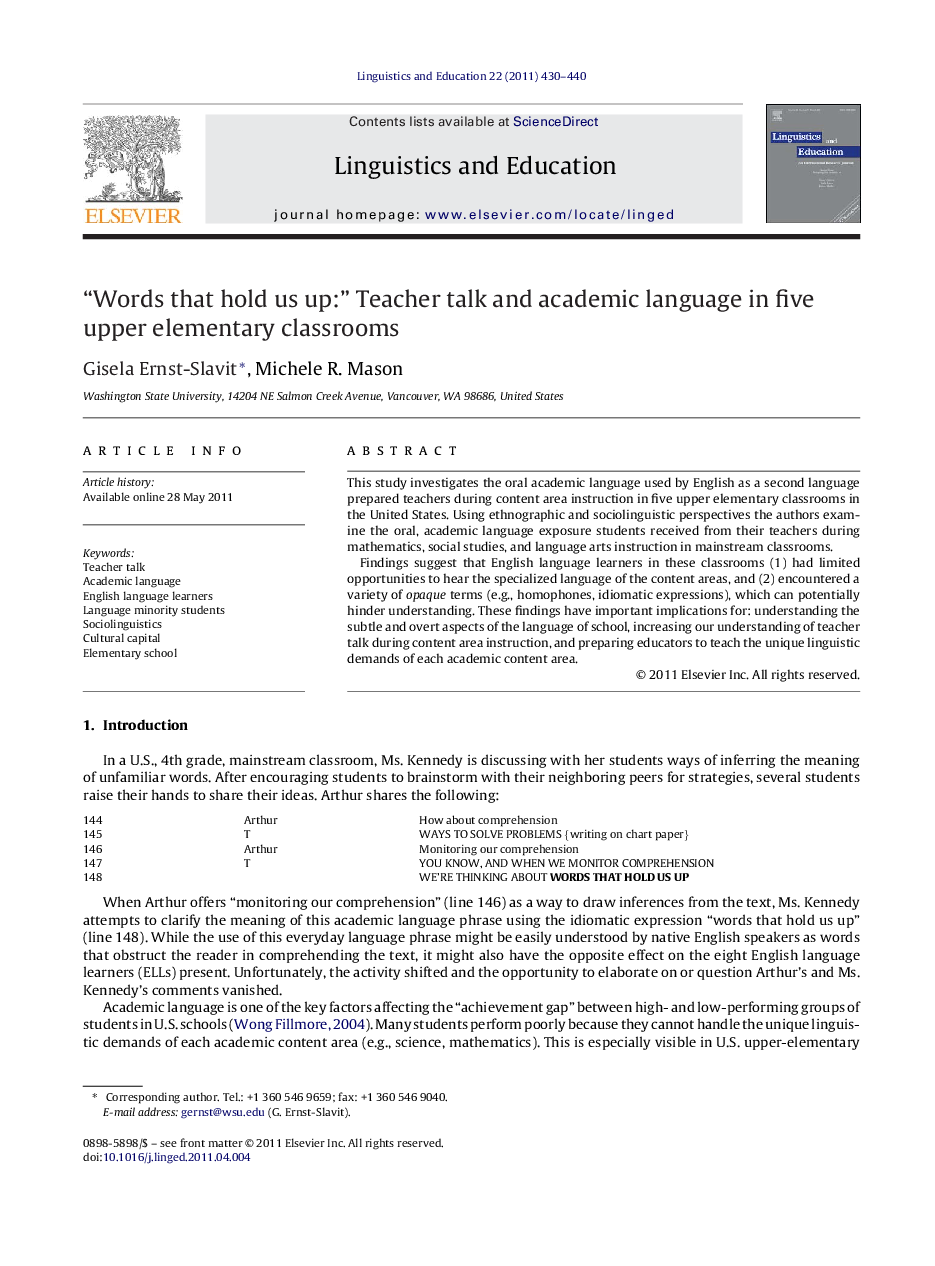| Article ID | Journal | Published Year | Pages | File Type |
|---|---|---|---|---|
| 366235 | Linguistics and Education | 2011 | 11 Pages |
This study investigates the oral academic language used by English as a second language prepared teachers during content area instruction in five upper elementary classrooms in the United States. Using ethnographic and sociolinguistic perspectives the authors examine the oral, academic language exposure students received from their teachers during mathematics, social studies, and language arts instruction in mainstream classrooms.Findings suggest that English language learners in these classrooms (1) had limited opportunities to hear the specialized language of the content areas, and (2) encountered a variety of opaque terms (e.g., homophones, idiomatic expressions), which can potentially hinder understanding. These findings have important implications for: understanding the subtle and overt aspects of the language of school, increasing our understanding of teacher talk during content area instruction, and preparing educators to teach the unique linguistic demands of each academic content area.
► The study expands our insights on teacher talk during content area instruction. ► Teachers used limited amounts of oral academic language during content instruction. ► Teacher talk included an abundance of opaque terms, which can hinder understanding.
